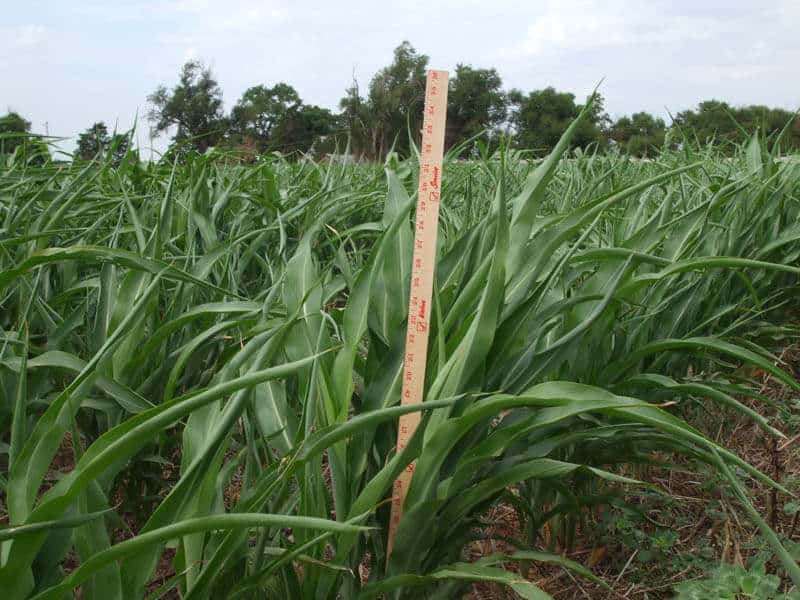
Senior Farm and Ranch Broadcaster, Ron Hays, is back again today with Kansas State University associate professor and Beef Systems Specialist, Jaymelynn Farney talking about possible forage options for fall of 2022.
One option for some late season forage for those who get some rain, Farney said, is forage sorghum.
“I like the sorghum-sudan or forage sorghum the best for a cattle feed just because it does produce more biomass than pearl millet,” Farney said. “Pearl millet is your much safer grazer. Pearl millet doesn’t have prussic acid. If you want to turn out on that you are pretty good.”
If grazing management is practiced correctly on sorghum-sudan, Farney said prussic acid should not be much of an issue. Some rules of thumb to follow when grazing sorghum-sudan, Farney said, are to not turn out until two feet tall, do not graze it below eight inches and not for more than ten days.
“Typically, if we have normal, good rains, in about 28 days you can rotate back onto that sorghum-sudan, so when I designed some grazing paddock sytems, I like to have at least four paddocks,” Farney said. “In a perfect rain event, you graze each paddock for 10 days, then by the time you are back you are up to 30 days, hopefully you are up to a foot tall.”
Allowing your forage to go below two feet, Farney said, is a recipe for disaster.
“Immediately after a drought breaking rain, you can have high prussic acid because those plants are going to grow as fast as they can, especially if they are in shorter,” Farney said. “So, you do need to make sure that you implement those.”
Farney said in her own experience grazing sorghum-sudan, which is quite frequently, she has had minimal issues.
“I know in Oklahoma there has been some big outbreaks and negatives,” Farney said. “If you stick religiously to those rules of thumb, you are less likely to have an issue.”
The thing Farney said she sees producers struggling with the most is having so many different forage options, but not all of them have scientific data supporting their success.
“I still remember a few years ago okra was the thing everybody said you had to plant- it was the best feed for cattle,” Farney said. “I could not find a single publication anywhere that talked about cattle performance, cattle palatability, cattle preference or anything on okra.”
Farney did a preference study where she planted various summer annuals such as sorghums, pearl millet, mung bean, safflower, and also okra.
“In my set of cattle that year, they refused to touch the okra plant,” Farney said. “I’ve heard from other people that their cattle go out and that’s the first thing they pick out, so we just don’t know.”
With so many options for cover crops, Farney said it can be daunting for producers to decide what to plant.
“I use a tool called the Midwest Cover Crop Council decision tool and that was because I was part of that,” Farney said. “But you put in your operation’s objectives and it helps narrow that list down to a list of plants that meet whatever your specific operational goals are.”
To access the Midwest Cover Crop Council decision tool, click here.
Click the LISTEN BAR below to hear more from Ron Hays and Jaymelynn Farney talking about fall 2022 forage options and tips for managing them.















